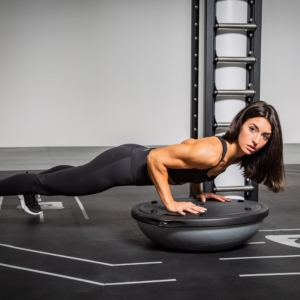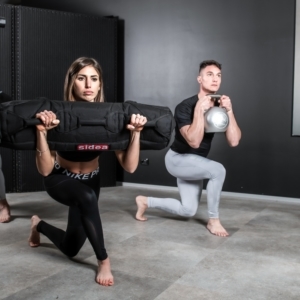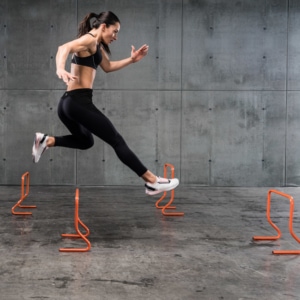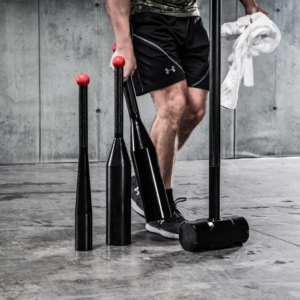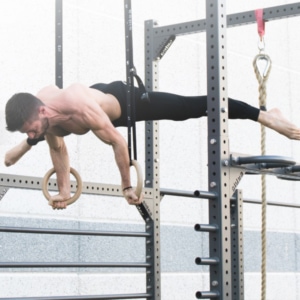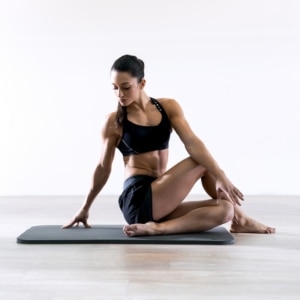🇮🇹 Leggi in Italiano
Christmas is getting closer and everything is ready for the beginning of a new season of winter sports. Whether you practice it at a competitive level, you are a “warrior weekend” or just a skiing or snowboarding enthusiast who loves to pass the winter holidays on the snow, a correct physical preparation will help you improving your performance, in addition to avoiding injuries. Regardless of which sports discipline you practice, from alpine to cross-country skiing, from ice skating to snowboarding, a right preparation for winter sports is essential to preserve your own safety and to enjoy at your best the experience on the snow.
All of these sports have a common characteristic, which is to substantially involve the lower limbs and the core. Not everyone has the good habit of keeping active during the other seasons, and this could lead to higher possibilities of getting injured while performing the technical movements.
How can I avoid injuries while skiing or snowboarding?
The most part of the injuries that may occur during these activities are caused by a lack of muscular strength in the lower limbs or of a lack of stability in the torso. While skiing or snowboarding, the legs are subject to isometric and eccentric contractions, which heavily stress the muscles. If not well trained, these muscles will get fatigued much faster and won’t be able to stabilize the joints, and as a consequence this would imply an increased risk of falling, of uncontrolled twisting movements and of overloading other muscle groups.
Don’t forget that these sports are performed on the snow, which is a particularly unpredictable and shifting ground. You won’t always find well beaten tracks, that will maintain their firmness throughout the entire day. Holes, softer points or ice sheets can have a negative impact on the technical gesture that you are performing, and if you have not a good stability and coordination the risk of falling or not controlling the movement is just around the corner.
Winter sports preparation: suggested exercises
As we already said, the main muscle groups involved in these activities are the lower limbs, then a good method to prepare for skiing or snowboarding is to include some specific exercises in your training routines (if you already practice some sport) or to perform some circuit training also at home in order to tone up and make your joints more stable.
Undoubtedly, squats, lounges and isometric exercises are the most useful exercises to perform, as they train the quadriceps, the glutes, the femoral biceps and also the core.
Below you can find a small workout routine for your winter sports preparation, that you can easily perform at home 2 times a week:
- Squat
- Elbow plank
- Alternated front lunges
- Glute bridge
- Side elbow plank
- Wall isometric squat
If you have the opportunity to go to a gym, and you have many tools and equipment available, this is a workout circuit that can be very useful for your preparation:
- Squat on Dune Ball Board
- Alternated Side Lunges with Flying
- Elbow Plank
- Clean with Flow-bag
- Russian twist with Med Ball
- Isometric Squat on Dune Ball Board
In both cases, perform the circuit 3 times, with 30 seconds of activity followed by 30 seconds of resting. Once completed the first round, rest for 90 seconds and then start again.
Remember to dedicate some time to stretching at the end of the workout, as only a strong and flexible muscle will be able to repeatedly support heavy loads during sports activity like skiing or snowboarding.
Suggested activities for the preparation to the winter sports season
Among the various gym activities and courses, the most useful to prepare your body to the winter sports season are undoubtedly the functional training ones, that can help you toning up and also improving your intramuscular and intermuscular coordination.
There are many exercises in this kind of activity: suspension training exercises, ballistic exercises, weightlifting and agility training, just to mention some of them. Don’t forget that you should not only care about toning up in order to avoid injuries, but you should also be able to coordinate the various movements and to have a good mobility that allows you to support sudden movements performed at high speed.
5 useful advices to get the best from your winter activity:
- Prepare yourself as well as possible for your week or weekend on the snow, for example through the workout routines we previously provided you
- Try to keep hydrated while skiing or snowboarding. Even if it’s cold it doesn’t mean that you are not sweating: keeping your muscles hydrated will allow you to resist much longer throughout the day
- Eat food which is rich in vitamins and minerals
- Try to have some resting periods while skiing or snowboarding
- Don’t start with the most difficult tracks: when you begin your activity, or after a long pause, it’s advisable to start with an easy track, that will serve as warm up
Did you find these advices helpful? If you need a routine which is customized on your needs or you need some other advice don’t hesitate in contacting us.
Matteo Zoffoli
- Professional athletic trainer and high-intensity training specialist.
- Physical trainer for Cesena Calcio football club for three seasons (2015-16, 2016-17, 2017-18) as strength and conditional coach.
- Fitness consultant as regards training scheduling and the evaluation of the functional training activities, athletic preparation and online coaching.


